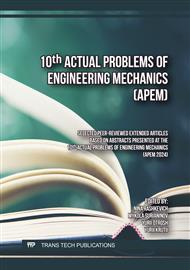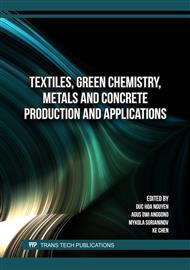p.63
p.71
p.79
p.87
p.95
p.103
p.113
p.121
p.131
The Influence of the Solid Phase on the Properties of Foam Concrete
Abstract:
An overview of literary sources related to the formation and development of the technology of aerated concrete is given. It is shown and systematized in which directions scientific research aimed at improving their functional properties was conducted. It is noted that almost all researchers associate the dependence of the properties of porous concrete with the character of their porosity. The conducted analysis allowed the authors to hypothesize that the properties of aerated concrete are exclusively determined by the nature of the distribution of the solid phase, that is, by the nature of its structure. Determination of the influence of the solid phase and its nature on the properties of aerated concrete is devoted to experimental studies. They were conducted in two stages. At the first, when applying physical modeling, the effect of the total porosity and water consumption of the dry mixture on the change in the nature of the solid phase of the model was studied. Internal interfaces between structural elements are taken as characteristics of the solid phase - their total length and width. It is shown that the water consumption of the mixture has different effects on materials with a dense and porous structure. At the next stage of experimental research, the influence of the water consumption of the mortar mixture on its strength (strength of the matrix material) and the strength of foam concrete was studied. The initial rheological conditions of the formation of the structure were changed by changing the size and amount of filler, changing the amount of liquid and plasticizing additives. The results of the experiments confirmed that the initial rheological conditions have different effects on the materials of dense and porous structure. Under certain conditions, in materials with a porous structure (in foam concrete), an increase in the water-solid ratio leads to an increase in the strength of concrete. Which indicates that with such water consumption, more favorable conditions are created for the formation of a porous structure, which is reproduced on the character of the solid phase. The given results confirm the given hypothesis and can be used in the synthesis of new building materials, including with the use of artificial intelligence.
Info:
Periodical:
Pages:
121-130
Citation:
Online since:
December 2024
Price:
Сopyright:
© 2024 Trans Tech Publications Ltd. All Rights Reserved
Share:
Citation:



